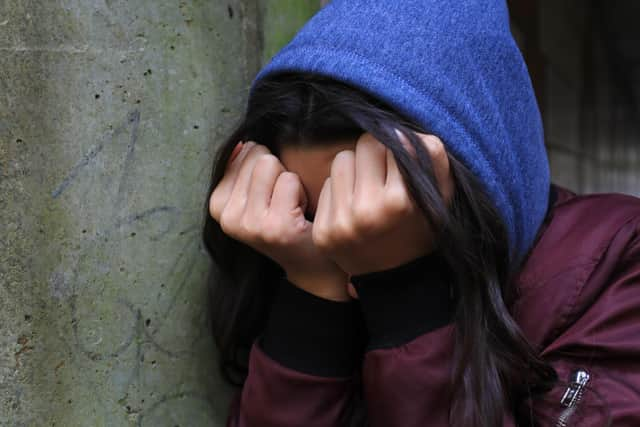Shocking figures show more young women treated for self-harm than men in Hertfordshire
and live on Freeview channel 276
Young women in Hertfordshire are nearly five times as likely to be hospitalised for self-harm than young men, new figures suggest.
The latest data from the Office for Health Improvement and Disparities shows there were around 555 hospitalisations of young women and girls aged between 10 and 24 in Hertfordshire for self-harm in 2021-22.
Advertisement
Hide AdAdvertisement
Hide AdIt meant there were 538 admissions per 100,000 adolescent women in the area that year.


However, this fell to 112 admissions per 100,000 adolescent men, meaning a young woman was around 4.8 times as likely to be hospitalised for self-harm.
It echoes a trend across England, where there were 35,000 hospitalisations of young women and girls due to self-harm in 2021-22 – four times as many for young men and boys.
Mental health charity YoungMinds called the figures ‘deeply concerning’ and is urging the Government to prioritise young people's mental health and address the root causes.
Advertisement
Hide AdAdvertisement
Hide AdTom Madders, director of communications and campaigns at the charity, said: “To turn the tide on this crisis, the Government must start prioritising young people’s mental health by setting out a clear plan to drive down prevalence and address the root causes. This includes providing early support in communities, increasing help in schools, and reducing waiting times.”
It comes as the Government published the National Suicide Prevention Strategy on Monday (World Suicide Prevention Day) which launches over 100 initiatives to reduce suicide rates within two-and-a-half years, with a particular focus on young people.
The Government pledged to implement a new national alert system – where people can notify relevant authorities about individuals, suicide methods, or risks – and improve school mental health services so half of pupils can access support by March 2025.
The Department of Health and Social Care said: “We’re extending coverage of mental health support teams to at least 50 per cent of pupils in England by the end of March 2025.
Advertisement
Hide AdAdvertisement
Hide Ad“An extra £2.3 billion a year is being invested in NHS mental health services by March 2024, so an additional 345,000 children and young people will be able to access NHS-funded mental health support quicker.”
Health and Social Care Secretary Steve Barclay responded to the figures.
He said: “It’s imperative we support people earlier to prevent them reaching the lowest point, while tackling emerging methods of suicide, and eradicating harmful material online.”
Meanwhile, it is thought the pandemic may have impacted people’s mental health in recent years.
Advertisement
Hide AdAdvertisement
Hide AdAn NHS spokesperson said: “The mental health workforce continues to grow in line with this demand and more than 2,000 trained mental health practitioners have been introduced into schools for additional and earlier support.”
Professor Peter Fonagy, chief executive of the Anna Freud mental health charity, said there were added pressures on women and girls which could impact theor emotional wellbeing.
He explained: “Pressure to look a certain way, achieve academically and comparison on social media all contribute to setting the bar much higher for girls and young women within society.
“By recognising these types of drivers of anxiety and distress in our children and young people earlier we can help to develop and improve intervention programmes.”